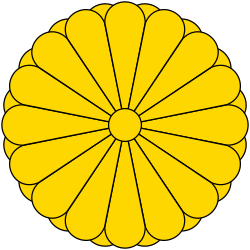A request that this article title be changed to 2006 Liberal Democratic Party presidential election is under discussion . Please do not move this article until the discussion is closed. |
| |||||||||||||||||||||
| |||||||||||||||||||||
| |||||||||||||||||||||
| This article is part of a series on |
 |
|---|
The 2006 Liberal Democratic Party presidential election was held on 20 September 2006 after the incumbent party leader and Prime Minister of Japan Junichiro Koizumi announced his intention to resign, a year after he led the party to landslide victory in the 2005 snap general election.
Contents
Shinzo Abe won the election, [1] (only to resign a year later triggering another leadership election). His chief competitors for the position were Sadakazu Tanigaki and Tarō Asō. Yasuo Fukuda was a leading early contender, but ultimately chose not to run. Former Prime Minister Yoshirō Mori, to whose faction both Abe and Fukuda belonged, stated that the faction strongly leant toward Abe. [2] Abe was subsequently elected Prime Minister with 339 of 475 votes in the National Diet's lower house and a majority in the upper house. [3]





